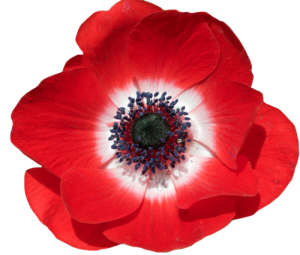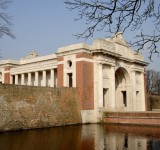Personal Details
Francis Edward Reece (known as Edward) born in Whitchurch, Shropshire in 1898, the second son of the late Mr John Francis and the late Mrs Elizabeth Reece of Wrexham Road, Whitchurch, Shropshire. It has proved difficult to trace Edward or any members of his family on the 1911 census return. His father died in 1907, but we cannot trace any further information about his mother, Elizabeth. (Only her christian name appears on the baptism records for the children, which may provide some clues). We know from the army effects record that he has three siblings – Harold, Henry and Ruth. This has enabled us to identify a further sibling, Lilian, who predeceased him. There is a Harold Reece, 8th Cheshire Regiment, shown on the Burleydam Roll of Honour and his medal index card shows a correspondence address of Wilkesley Lodge, Shavington Park, near Market Drayton, Shropshire. This confirms we have the right Harold Reece (25417) and the link between Edward Reece and Burleydam.
Military Details
Regiment : ‘A’ Company 11th Battalion Cheshire Regiment
Rank : Private
Service Number : 243713
Killed in action; Belgium 13 June 1917 Aged 19

The British War Medal (also known as 'Squeak') was a silver or bronze medal awarded to officers and men of the British and Imperial Forces who either entered a theatre of war or entered service overseas between 5th August 1914 and 11th November 1918 inclusive. This was later extended to services in Russia, Siberia and some other areas in 1919 and 1920. Approximately 6.5 million British War Medals were issued. Approximately 6.4 million of these were the silver versions of this medal. Around 110,000 of a bronze version were issued mainly to Chinese, Maltese and Indian Labour Corps. The front (obv or obverse) of the medal depicts the head of George V. The recipient's service number, rank, name and unit was impressed on the rim.
The Allied Victory Medal (also known as 'Wilfred') was issued by each of the allies. It was decided that each of the allies should each issue their own bronze victory medal with a similar design, similar equivalent wording and identical ribbon. The British medal was designed by W. McMillan. The front depicts a winged classical figure representing victory. Approximately 5.7 million victory medals were issued. Interestingly, eligibility for this medal was more restrictive and not everyone who received the British War Medal ('Squeak') also received the Victory Medal ('Wilfred'). However, in general, all recipients of 'Wilfred' also received 'Squeak' and all recipients of The 1914 Star or The 1914/1915 Star (also known as 'Pip') also received both 'Squeak' and 'Wilfred'. The recipient's service number, rank, name and unit was impressed on the rim.
Further Information
If you can provide any further information on Francis Edward Reece please get in touch by leaving a comment below, using our Contact Form or by calling in to Whitchurch Heritage Centre.
Information provided by Whitchurch Museum and Archives


